Are Donor-Advised Funds Fulfilling Their Purpose?

November 8, 2022 |
Donor-advised funds (often referred to as DAFs) have become an increasingly popular vehicle for charitable giving. The number of DAFs exceeded 1 million for the first time in 2020, with the amount of assets in these DAFs totaling over $159 billion — a growth of almost 10%.
DAFs are typically individual giving accounts operated by a public charity sponsoring organization called a fund sponsor. They allow donors to make contributions to the giving account and qualify for a tax deduction at the time of the gift. The donor can then recommend grants from the account to charitable organizations at a time of their choosing.
The largest criticism of DAFs is that there are no minimum distribution requirements. Donors are eligible for tax deductions made to the DAF before the funds go to the actual charities. Given the $159 billion in DAFs at the end of 2020, we believe it is safe to assume that excess funds are being held in DAFs that can and should be distributed for charitable use.
In June 2021, two US senators introduced a bill to help ensure that DAFs make resources available to charitable organizations in a timely manner. While the bill currently has little likelihood of becoming law due to significant pushback, it is clear the amount of assets residing in DAFs is a relevant topic.
There are legitimate reasons for holding assets in donor-advised funds. Some of the more popular ones include:
- A large one-time income transaction occurs in the donor’s financial circumstances, such as the sale of a business. The donor desires to give a portion of those funds, but instead of giving a large one-time gift, they prefer to give a consistent amount over time. They also may want to avoid the pressure of searching for charitable organizations or causes they want to support.
- Some donors may look to accumulate funds over time so that when a “big ask” comes up, they have funds set aside and can meet the need using DAF funds rather than their personal cash flow at the exact time of the need. Examples of this would include a charity that needs to replace a vehicle, or some type of capital campaign.
There are steps that donors and charitable organizations can take to help avoid an “endowment” mentality from developing with DAFs. These steps are applicable when large balances can create an environment where accumulating assets, rather than distribution of the assets, becomes the goal.
For DAF owners:
- Set personal benchmarks to distribute a minimum percentage of the fund assets each year.
- Develop lines of communication with a few charities that match your passions and interests. Encourage these organizations to keep you appropriately apprised of special or urgent needs within their organizations.
- Offer to sponsor a “matching gift” program with a charity. If the charity can find other donors to give, you will match those contributions up to a certain dollar amount. In this way, you “double your gift” in a sense, and also commit to distributions from your donor-advised fund.
For charitable organizations:
- Make certain that you thank the donor who recommended the grant, not the fund sponsor. For instance, Fidelity Charitable is the largest fund sponsor — but if you receive a grant from Fidelity Charitable, make sure you send a specific thank-you to the recommending donor, acknowledging the gift.
- Cultivate relationships with and prioritize donors who give using donor-advised funds. Donors using DAFs profile as steady, consistent donors as they are usually giving from a source of funds already set aside for charity as opposed to giving from current personal cash flow. Timely follow-up with these donors and communicating the impact of their gift are crucial to developing these relationships.
- Ensure that your current fundraising materials and personnel recognize, encourage, and are knowledgeable about donor-advised funds.
There are many needs in our communities, and many organizations doing excellent work in meeting those needs. Let us take personal responsibility and ensure that we are both wise in our giving and generous in our distribution of funds to these organizations.
Disclaimer: Information provided by Simon Lever as part of this blog post is intended for reference only. This information is not a substitute for seeking professional advice from a Simon Lever advisor. Although Simon Lever has made every effort to ensure that the information provided is accurate, the reader assumes all responsibility for the use of this information.



